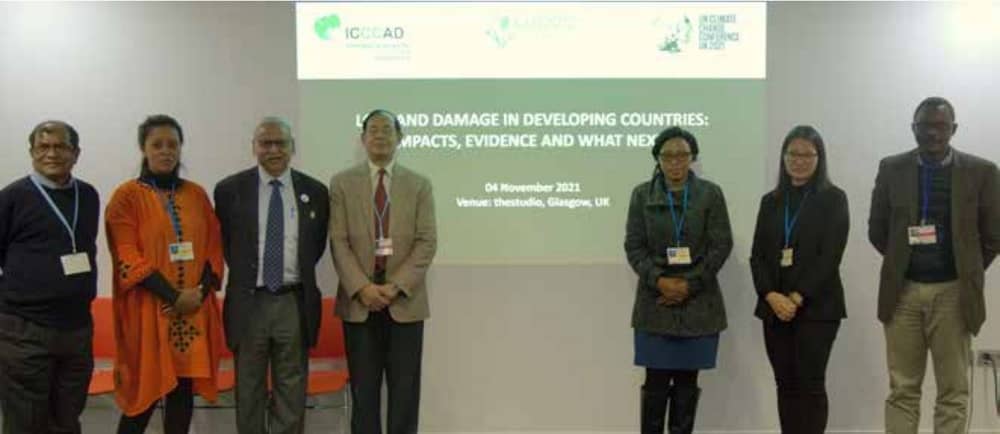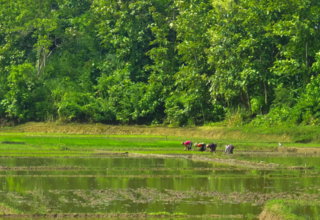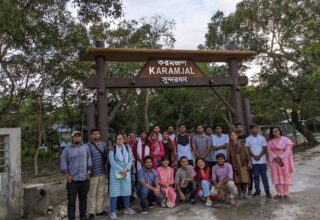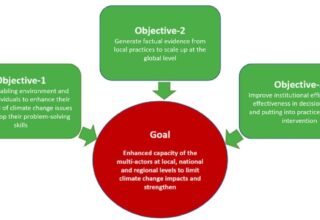
As manifested through recent climatic events in different countries across the world, loss and damage from climate change is a real and increasing threat to the most vulnerable communities, particularly in the Least Developed Countries (LDCs). However, due to its highly political nature, the topic, despite being a question of survival for the vulnerable countries, has not made much progress in the climate negotiations, particularly on the issue of finance.
As known, adaptation finance is inadequate by orders of magnitude; the rationale for having a dedicated financing mechanism on loss and damage needs to be strengthened. Review of the Warsaw International Mechanism (WIM), the key body under the UN Framework Convention on Climate Change (UNFCCC) that deals with loss and damage took place at the 25th Conference of the Parties (COP25) to the UNFCCC held in Madrid, Spain. However, parties failed to adopt a decision on how to make the case for financing loss and damage.
Against this backdrop, with an aim to strengthen the LDC position on loss and damage, as a part of the Open Society Foundation (OSF) supported project titled ‘Support to Least Developed Countries on Loss and Damage’, the International Centre for Climate Change and Development (ICCCAD) commissioned six country case studies on loss and damage from Bangladesh, Bhutan, Ethiopia, The Gambia, Malawi, and Uganda. The case studies were done by researchers from Least Developed Countries (LDCs) Universities Consortium on Climate Change (LUCCC), an official capacity building of the LDC governments, of which ICCCAD is the secretariat.
Moderated by Prof Mizan R Khan, deputy director of ICCCAD and program director of LUCCC, researchers shared insights into how their countries are facing losses and damages due to the impacts of climate change, the challenges in addressing them, and their expectations at COP26. Losses and damages, both economic and non-economic are strongly evident in these vulnerable LDCs.
A lecturer at the Royal University of Bhutan, Ugyen Yangchen’s presentation on loss and damage in Bhutan illustrated the best case of how LDCs face injustice due to climate change. Despite sequestering three times more Carbon dioxide than its emissions, the agriculture, forestry, and hydropower-dependent economy of the mountainous country face losses and damages.
Very recently they saw an excessive amount of rainfall that led to the destruction of crops, mainly paddy. All other LDC economies also predominantly rely on climate-sensitive sectors. For example, in Ethiopia, the agriculture sector contributes 34.8% to the country’s GDP and employs about 72.7% of its population.
Three key challenges in addressing loss and damage in the vulnerable developing countries emerged during the case study presentations.
Firstly, limited understanding and capacity to generate and report data on loss and damage. “While losses and damages are happening largely, there is limited documented evidence”, said Dr David Mftumukiza, senior lecturer at Makerere University, Uganda. “First investments are required building capacity to understand and document loss and damage,” he added.
Secondly, the absence of proper policy and institutional frameworks is related to loss and damage. The lack of understanding of the issue and systematic documentation of losses and damages occurring leads to uninformed decision-making resulting in the total non-existence of loss and damage in the policy and institutional frameworks of the countries.
Among the policies and legislations of five countries, Uganda’s newly enacted National Climate Change Bill 2020 is the only exception that is explicit on loss and damage in the context of climate change, which provides the legal setting to guide addressing loss and damage in the country. “This is vital to building institutional capacity to address both economic and non-economic loss and damage”, emphasized Dr Hanna Habtemariam Robele, assistant professor at Addis Ababa University, Ethiopia.
Thirdly, the dearth of finance to address loss and damage. None of the case studies found any ongoing projects focusing on addressing loss and damage. This is due to the lack of available funding for addressing loss and damage. “Limited funding from the national budget is far from what is needed to deal with loss and damage”, noted Dr Junice Madalo Dzonzi, a senior lecturer at Lilongwe University of Agriculture and Natural Resources (LUANAR) in Malawi.
“The Government of Bangladesh is planning on developing a National Mechanism on Loss and Damage utilizing resources from its domestic climate fund. However, funding from international sources is also required as this is going to be insufficient”, echoes Dr Nurul Quadir, former additional secretary of the Ministry of Environment, Forest, and Climate Change of Bangladesh, and former member of the Executive Committee of WIM.
Speaking of the urgency to establish an international financial mechanism on loss and damage, former chair of LDC Group on climate change, Gebru Jember stated, “Significant progress is yet to be seen, while the impact on the ground is becoming irreversible and more expensive. The reality is that all over the world no one is immune to loss and damage. Unless funding is made available for loss and damage, whatever other investments are made will not see the desired impact.”
Director of ICCCAD, Prof Saleemul Huq concluded the event with the remark, “The aim of the project is that we are hoping to plant a seed, to say that loss and damage is important. It needs to be addressed and worked on. There will be pushback, but it cannot be stopped. Scotland has declared £1m (Later was scaled up to £2m) in loss and damage fund, and the ball has started rolling.”
This indeed happened at COP26. Although the outcome on loss and damage finance fell short of the developing country Parties’ expectations as no concrete decision on finance was made, they were able to bring the issue of loss and damage to the front in an unprecedented way.
Apart from Scotland, five philanthropies including the Open Society Foundation (OSF) and the Belgian province of Wallonia came forward to provide funding for loss and damage. Germany pledged 10 million euros for the work of Santiago Network on Loss and Damage which was established at COP25 to provide technical support to developing countries. Now, significant work needs to be done to further the agenda between COP26 and COP27 scheduled to take place in Egypt in 2022.
Originally this article was published on January 23, 2022 at Dhaka Tribune.
Md Fahad Hossain is a research officer at the International Centre for Climate Change and Development (ICCCAD).






